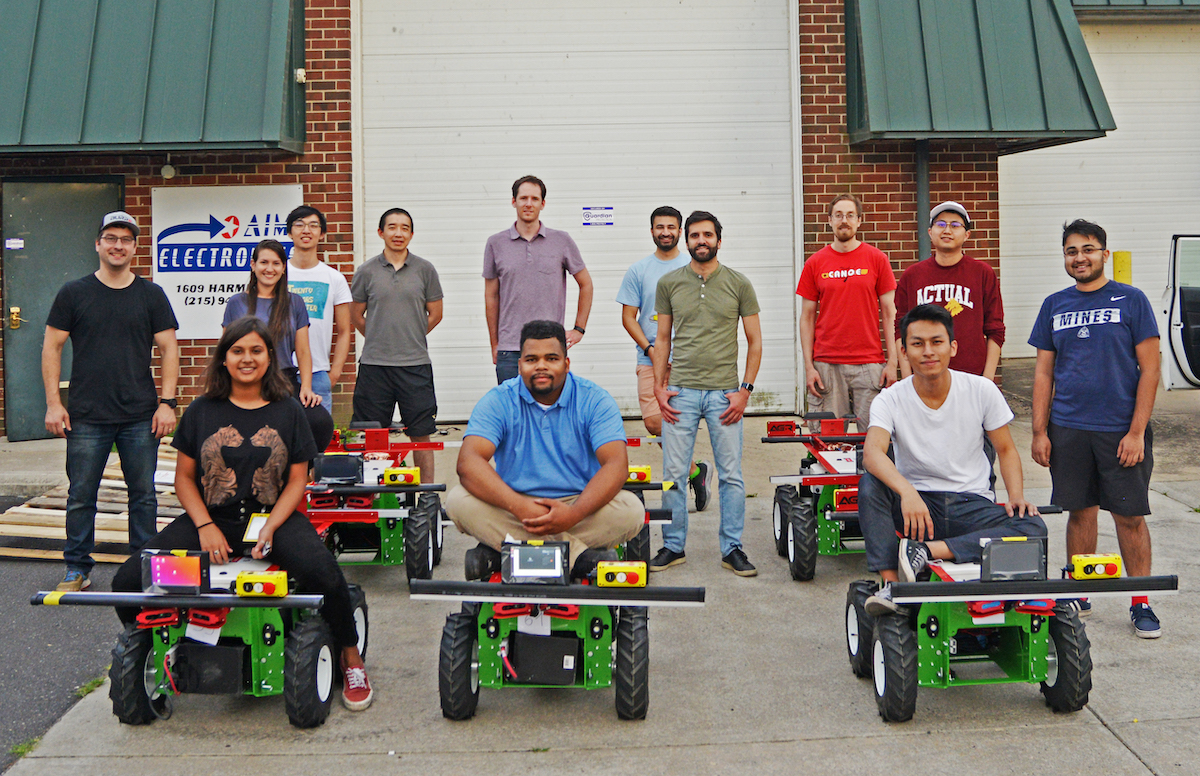NextFab-based Burro, formerly known as Augean Robotics, has raised a $10.9 million Series A round of financing a little more than two years after its seed round, the company announced Tuesday.
The four-year-old company makes an autonomous, collaborative robot called Burro, which assists in farming labor. And as field labor workforces have shrunk in recent years, the Series A will help in the company in producing more than 500 robots next year for its existing and growing list of customers.
The company recently took on its signature product’s name, which is easier to remember and falls in line with a line of agricultural brands that use an animal for their names like Deere and Bobcat, founder and CEO Charlie Andersen said. The original name was a reference to the Augean Stables that mythology’s Hercules cleaned in a creative way, but it was more an internally recognized reference.
“Fast forward to our having nearly 100 robots running in the field, used by people who almost universally only speak Spanish, and along the way it became pretty clear that none of our end users knew or cared about our original name,” Andersen said.
The robots, which are created so that anyone can use them right out of the box, are essentially “people-scale robots that help people by moving heavy things around,” Andersen said. Along with adding the dexterity needed to pick table grapes, the team is working on adding the feature of mobility autonomy into nursery and berry markets, too.
Leading this round is existing investor S2G Ventures and new investor Toyota Ventures, with F-Prime and ADM Capital’s advised Cibus Enterprise Fund joining. Existing investors Radicle Growth and FFVC also joined.
The team is still based out of South Philly’s NextFab makerspace, and it’s around 22 people at the moment — though with eyes on growing to nearly 40 in the plans, they will likely need outside space to scale, Andersen said. Those new roles will be in product management, engineering management with a slew of other engineering and business roles. (Check out current open roles.)
The team has moved back to in-person work at the space primarily, but as their robots need to go through distinct phases with each software release, it includes live testing out in the real world.
“Our team builds autonomous systems used in food production, and we are therefore on planes and in the field all the time,” Andersen said.
Along with the monetary side of the investment, Sanjeev Krishnan, managing director and CIO at S2G Ventures, will be joining Burro’s board of directors.
“Burro’s product is in high demand because the team is hyper-focused on understanding and solving real agriculture use cases in a way that is simple and accessible,” Krishnan said in a statement. “We are thrilled to back Charlie and the team at Burro as they work side-by-side with growers to improve the social, environmental and economic outcomes of farm operations.”







